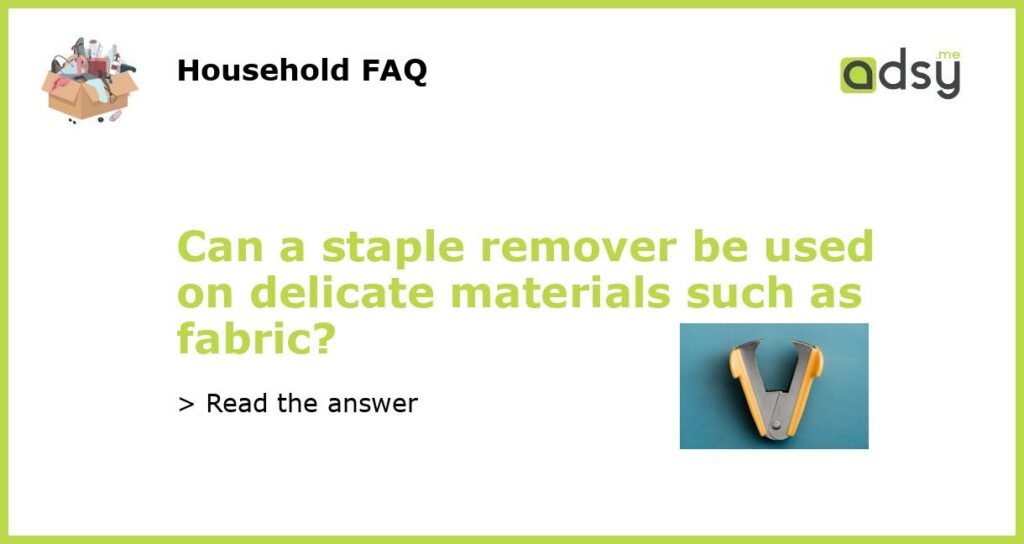Yes, a staple remover can be used on delicate materials such as fabric
Using a staple remover on delicate materials such as fabric may seem risky, but with proper care and technique, it can be done. Whether you need to remove staples from a garment, upholstery, or any other fabric item, a staple remover can be a handy tool to have. In this article, we will explore the reasons why a staple remover can be used on delicate materials, how to use a staple remover on fabric, and some tips for achieving the best results.
Why use a staple remover on fabric?
There are several reasons why using a staple remover on fabric is a good idea. First and foremost, it allows you to remove staples without causing any damage to the material. Staple removers are designed to grip the staple tightly and lift it out without tearing or stretching the fabric. This makes them particularly useful for delicate materials that can easily be damaged by other methods of staple removal, such as pliers or seam rippers.
Another advantage of using a staple remover on fabric is that it allows for quick and efficient staple removal. Unlike other methods, which can be time-consuming and require a steady hand, a staple remover can remove staples with ease and precision. This is especially beneficial when working with a large number of staples or when time is limited.
How to use a staple remover on fabric
Using a staple remover on fabric is a straightforward process. Here are the steps to follow:
- Position the staple remover: Hold the staple remover perpendicular to the fabric, with the jaws of the remover facing downward. Make sure the jaws are positioned directly under the staple you want to remove.
- Grip the staple: Squeeze the jaws of the remover together to grip the staple firmly. Be careful not to squeeze too hard, as this can cause the fabric to bunch up or tear.
- Lift the staple: Using a gentle upward motion, lift the staple out of the fabric. Be sure to lift in a straight line to avoid pulling or tearing the fabric.
- Repeat if necessary: If there are multiple staples to remove, repeat the process for each one until all staples have been removed.
By following these steps, you can safely and effectively use a staple remover on fabric without causing any damage.
Tips for using a staple remover on fabric
While using a staple remover on fabric is generally safe, there are a few tips to keep in mind to ensure the best results:
- Choose the right staple remover: Not all staple removers are created equal. For fabric, it is best to use a staple remover with a pointed tip and rounded, serrated jaws. This design allows for better grip and minimizes the risk of tearing or stretching the fabric.
- Test on a hidden area: Before using a staple remover on a visible part of the fabric, it is a good idea to test it on a hidden area first. This will allow you to assess its effectiveness and determine whether any damage is likely to occur.
- Be gentle: When using a staple remover on delicate materials, it is important to be gentle. Avoid applying excessive force or pulling too hard, as this can cause damage to the fabric.
- Use proper lighting: Adequate lighting is essential when using a staple remover on fabric. Make sure you can clearly see the staples and fabric to avoid any mishaps.
- Practice on scrap fabric: If you are new to using a staple remover on fabric, it may be helpful to practice on scrap fabric first. This will give you a chance to familiarize yourself with the tool and technique before working on a valuable or irreplaceable fabric item.
A staple remover can be used on delicate materials such as fabric with the right technique and care. It offers a safe and efficient way to remove staples without causing any damage to the material. By following the steps outlined in this article and keeping the tips in mind, you can confidently use a staple remover on fabric for various projects and achieve excellent results.






